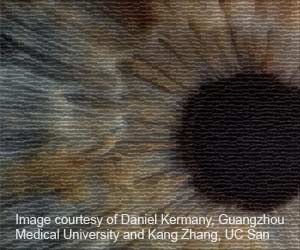
‘In response to eye damage or disease, the eye utilizes alternative mechanisms rather than direct contact with the bloodstream like non-transparent tissues to ensure that immune cells get to sites to provide healing and protection.’
Tweet it Now
"Why would we evolve a tissue that is so central to our being able to see without ways to ensure its protection, its ability to repair itself?" says, Sue Menko, Ph.D., Professor in the Department of Pathology, Anatomy and Cell Biology at Thomas Jefferson University, who led the research. "Immune cells are central to that protection and repair." The lens of the eye works like a camera lens. Its main purpose is to focus images coming in through the cornea - the transparent front layer of the eye - onto the retina at the back of the eye. The images are detected by the retina and then translated in the brain as what we see. That lens must be crystal clear. As a result, scientists have always described the lens as a tissue without vasculature and, therefore, no immune cells source either.
"At some point, you think about it, and you wonder how that's possible," Dr. Menko says. "It doesn't really make a lot of sense."
The puzzle led Dr. Menko and her team to investigate whether immune cells are present in the eye. In a previous study, they discovered that when the lens is in a diseased state, immune cells are not only recruited there, but they also show up in the cornea, retina, and vitreous body - all parts of the eye that don't normally have immune cells. Dr. Menko's work suggested that the immune cells come from the ciliary body, a sort of muscle that helps squeeze and pull the lens, changing its shape, and helping it focus.
"The ciliary body is also a vascular rich place, so it seemed like the most obvious place to look," Dr. Menko says.
Advertisement
"This is really the first demonstration that surveillance by immune cells of the lens in response to injury somewhere else in the eye," Dr. Menko says. The researchers also found that some immune cells were able to cross the lens capsule, a membranous structure that helps to keep the lens under tension. The results could point to a role for immune cells in cataract formation.
Advertisement
"We're excited to go from thinking this doesn't make sense to proving that the body is amazing and can adapt to anything. You just have to go in and look for it," Dr. Menko says.
"We should be willing to challenge dogma because that's where discovery is," she adds. "It can enlighten what we know if we always keep our mind open to what doesn't make sense and what maybe should be challenged to understand things better."
Source-Eurekalert















